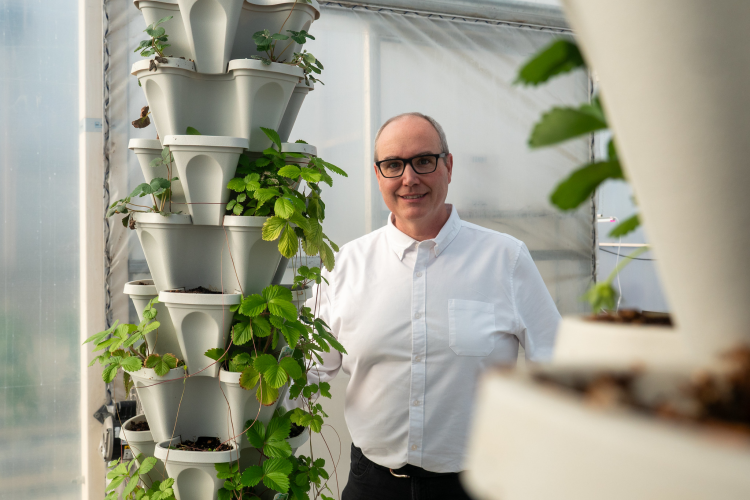A decade ago, B.C.'s hazelnut industry was in crisis. Stricken by Eastern Filbert Blight, orchard after orchard in the Fraser Valley was wiped out. A once-thriving hazelnut farm in Agassiz had 8,000 trees, all destroyed by the deadly fungus.

UFV's Chris Bodnar is helping B.C.'s hazelnut industry re-launch after blight wiped it out a decade ago.
Many farmers moved on to other things. At a tremendous cost, others stayed, planting blight-resistant trees, knowing it would take around a decade to fully replace what was lost.
Now, the hazelnut industry is ready for a comeback, but the question is how? This is a question University of the Fraser Valley's assistant professor, Dr. Chris Bodnar, is helping local farmers answer.
"The industry is really starting from scratch, because a lot of former growers retired, and most of the growers who are in it right now don't have experience," says Chris. "There's a lot of collective memory loss in terms of how the sector ran previously. There are a few people coordinating how to revitalize old equipment, and bring in knowledge from other jurisdictions like Oregon, where there's a large hazelnut sector."
Chris is a former farmer who spent 18 years in industry. He knows all too well that it's not enough to plant and harvest. Farms are businesses, and businesses need a plan. But too often, he says, plans are based on gut instinct and not data.
"There's a lot of throwing ideas at the wall to see what works and what doesn't work, a lot of decisions based on hunches," he notes. "Where our UFV research can help is by testing ideas, measuring results, and providing numbers and evidence that back up or refute the gut feelings people have.
"That will lead to wiser decisions."
Before moving into academia and consulting, he ran his own organic vegetable business with direct-to-consumer sales. It was a roller coaster experience, and he knows what it's like to stand at the beginning of the road, as hazelnut growers do now.
Chris says the agriculture industry operates at a net loss in B.C., suggesting farms collectively spend about a quarter billion dollars more per year than they bring in. The challenges they face can't always be forecasted.
At its best, his business thrived with customers who enjoyed high-quality, fresh, and flavourful produce, even if it came at a higher price. But the last five years of the business included the unexpected adversity of COVID-19 along with a shift in consumer behaviour.
"We swung from a public who was very receptive to paying more for locally produced food to one that was very price conscious," he says. "People's budgets were strained by economic circumstances, and that has continued with inflation pushing the cost of produce beyond what many people can afford."
When he was in the thick of the battle, he searched for answers through trial and error but also found value in sharing information with colleagues in the sector. The most important lesson he learned was to test ideas before rolling them out on a larger scale.
"You find something that works, and you stick with it for a while, but things change, and you have to constantly re-evaluate," Chris recalls. "Making changes in a business requires careful consideration and analysis to really understand what the root cause of an issue is."
As the hazelnut industry relaunches and growers of other crops search for a better path forward, Chris focuses on small steps and incremental improvements that add up to better economic viability.
He says growers are passionate about what they do, and they're willing to pour resources into the pursuit. But he says B.C.'s agriculture sector operates at a net loss each year, spending more than they take in.
By working with growers, crunching their numbers and understanding their environment, he believes UFV can be of great assistance.
"You have a lot of people doing great research on the science side, like Dr. Lenore Newman and her team at the Food and Agriculture Institute, and Dr. Lauren Erland and her work in the BERRI Lab, trying to find solutions to climate challenges, pests, and diseases," Chris says. "But at the end of the day, if we don't find solutions with economic viability in the long term, we'll continue to spin our wheels.
"How long can growers continue subsidizing our food? They certainly can't do it forever, so what do we need to do to keep them growing food? That's what motivates a lot of my research."













